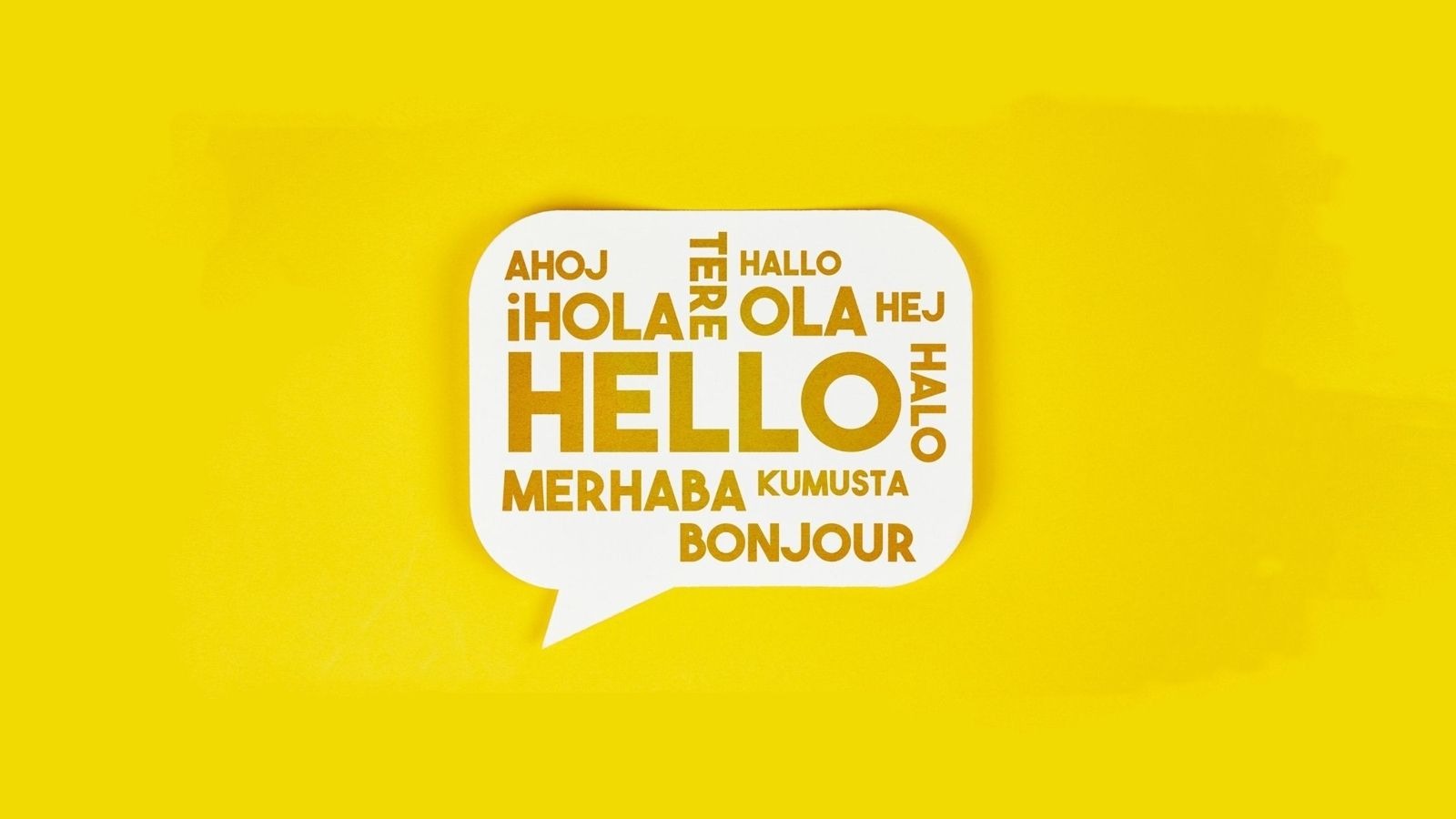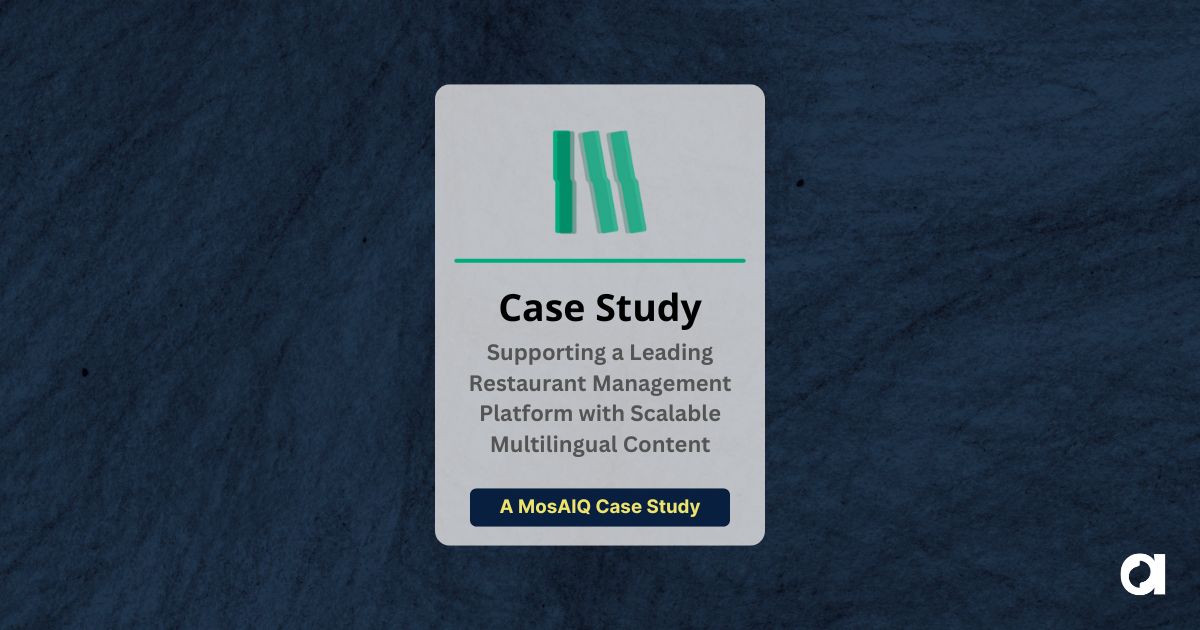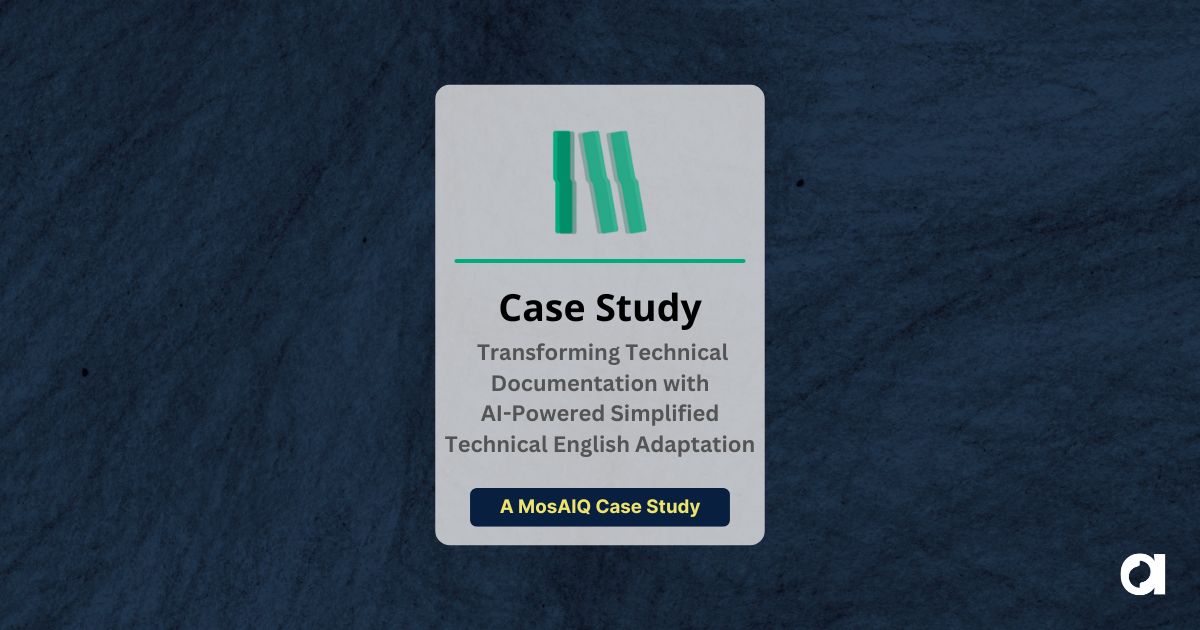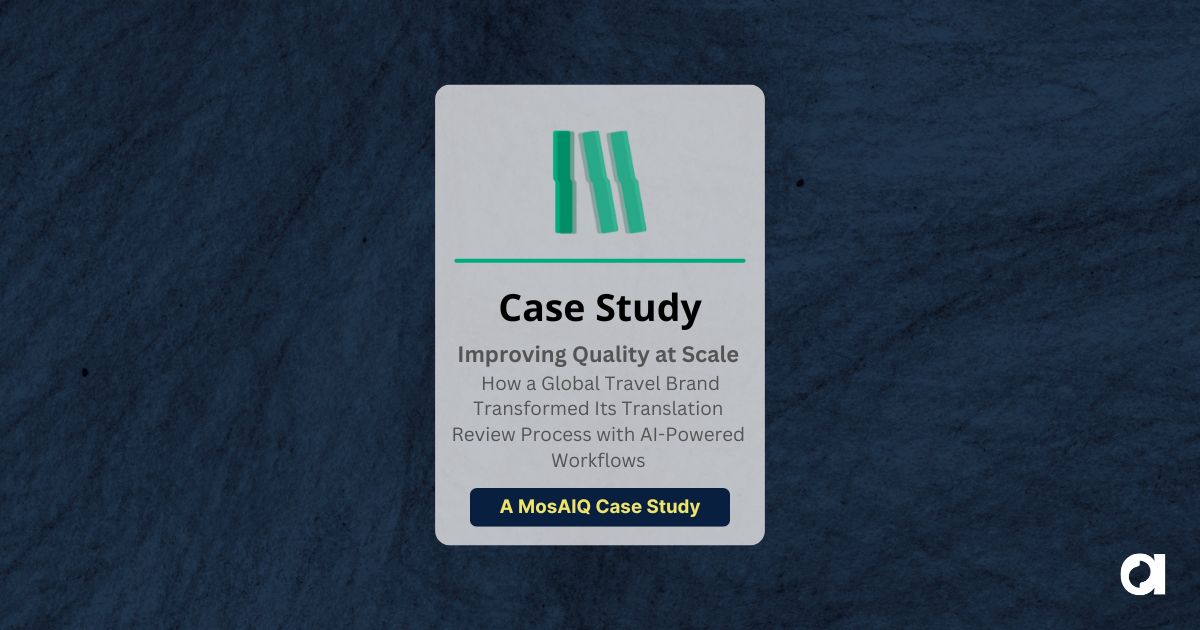Here Are Our Pro Tips to Staying on Budget Without Sacrificing Quality
You already know taking your brand global or building a global brand from the ground up demands well-localized content for every language your target audiences speak. But the translation costs of all that content can add up quickly.
Thankfully, this doesn’t have to mean sacrificing quality when translating on a budget.
With a few simple early planning steps, the strategic use of technology to automate at strategic points, and a few tweaks in the “business as usual” translation model, you can achieve stand-out sales results and still save money on translation.

Pre-project Planning: Working Ahead to Save in the Long Run
Planning your translation strategy right from the start is a high-impact way to save money on translation costs. Making a plan that accounts for the big picture and the smallest details will help you avoid the potential pitfalls that come from improvising a large-scale project.
- Create a Timeline for the Project
A project scope document is one way to anticipate your project timeline, translation needs, and requirements. You can develop this internally or with a translation partner. - Build in Translation Costs from the Start
Are you going global next year? Have you translated into one target language but know you’ll be translating into a second? Knowing where you’re going will help you identify the points at which you’ll need translation. - Finalize Your Source Content Up Front
Before you send your project out to your Language Service Provider (LSP), ensure that the source content in the original language is void of errors and exactly the message you want to be transmitting for your brand.If you build in time to review your source content and ensure that it’s error-free first, you save yourself the headache of having to go back over the translated copy.Remember, any changes you make in the source text after it starts being translated are changes you have to make later in every single language by hand so finalizing your content ahead of time is a great way to save money on translation.
And our absolute, best tip for content that translates hassle-free? It sounds simple but, avoid colloquialisms, culturally-specific phrases, nuances, contractions, possessive pronouns, and modal verbs whenever possible as these are not easily translated in many languages.
When translators have to ask for clarification because of miscommunications or mistakes in the text, it adds extra time and expenses to the project.
- Create Adaptable Layouts that “Go with the Flow” of Translation
The length of text on a page changes depending on the language into which you are translating, so it is important to have global templates with flexible layouts to accommodate both growth and shrinkage of text after translation. Build enough spacing into your layout and layout elements to handle increases and decreases in text length and bear in mind that translation from English to Romance languages expands the text 30-40%. If you expect to translate into languages that read from right to left, take this into consideration as well.Translation costs can skyrocket when you have to adjust the web layout in the middle of a translation project. But if you’ve built a global template from the beginning, the web translation process will go smoothly and keep your costs down.
Into the Project: The “Triple Crown” of Translation Best Practices
Once you’ve planned the scope of your project and laid the groundwork for efficiency, it’s time to put that plan into practice. And by remembering these 3 guidelines during the translation process, you can reduce unnecessary translation costs:
- Reduce Word Count Without Compromising Communication
Translation pricing is mainly dictated by the word count of your document, software strings, video content, and website pages. Therefore, editing down the number of source words can help you save money on translation.
Knowing When and What to Cut
Be strategic in choosing what you want to be translated versus what may not be necessary for a particular market. For example, your online public relations releases for the United States may not be relevant to your sales efforts in Japan, so you may not want to send those out for translation.Be Consistent In Your Sentences and Automate when Possible – When appropriate, write sentences that are almost exactly the same with consistent spacing, punctuation, words, and phrases. If possible, use a content reuse plugin with your authoring tools or CMS to maximize use of text that has already been written and approved.
The plugin will suggest previously authorized content when you enter new text that is similar, saving time on content generation. Having consistent source text will also allow you to get better use of translation memory which is the best tool for reusing your completed and approved translations.
The Case for Higher Word Count
Simplifying and reducing word count may not be feasible, or even a good choice, for your high-level marketing and branding content. This content tends to be more complex, nuanced, and highly strategic and therefore would benefit from going beyond localization and being sent out for transcreation and creative adaptation. - Build a Glossary for your Industry-Specific Words
Before going outside your organization, create your own glossary of terms that are specific to your industry, culture, and brand. Have it translated by internal staff that live in the target country, know your business, and are native speakers of the language.An Important Side Note: Any other translation by internal staff is not recommended because an experienced linguist is generally better suited for capturing the nuances of the language. Additional translation by internal staff also takes them away from their other work, further contributing to the overall expense of the project. - Optimize Images for Translation
Use scalable vector graphics (SVG) in your web content when possible. Because they are defined in XMes, SVG graphics can be searched and indexed in different languages for multilingual SEO purposes, making them more accessible to a global audience. They are also immediately localizable as the text is alterable by translation tools and requires no manual extraction. When using other image formats, add text in labels or content boxes that sit on top of the image.Remember: Don’t embed text into images because this adds many more steps for translators and desktop publishing specialists and can significantly add to the cost of translation services.
With a little legwork on your part, you’ll be able to seamlessly hand off a translation project and any source files to your translation partner without a lot of back-and-forths. The sooner they can get started on translating, the lower your costs will be.

The Automation Edge: Reducing Work (and Expense) by Automating Workflow
The little tasks that are part of translating—transferring files, cutting and pasting, creating new projects or quotes—can now be automated. By taking out these little tasks, you could end up saving days, or even weeks, of work over a half-year period. This is project management and engineering time you don’t have to pay for and automating these little tasks frees you and your team up to focus on more important work.
It’s important to note, this isn’t machine translation as the automation doesn’t actually touch the words at all. Instead, it eliminates many of the manual tasks required to prepare or transfer projects. For example, you can automate the transfer of text from a software UI to a translation management system (TMS), the creation of new projects in your translation partner’s TMS, or the quote approval process.
Automate for More Consistent Results
No matter how well trained your team is, there are bound to be a few differences from one person’s process to another’s. Automation reduces the risk of introducing human errors into otherwise simple processes. If a human touch isn’t necessary for the task, automating it will give you better consistency at reduced translation cost.
[form_newsletter]
Automate to Save Budget
You can save a lot of time by choosing a translation partner that’s equipped to automate much of their processes. Automating little tasks such as file transfers or generating review prompts, combined with appropriate use of machine translation assets, reduces the amount of project management and engineering time you have to pay for in your translation pricing. And the minutes add up–we’ve recently saved our clients between 4 and 18 hours just by automating the little tasks.
Optimize Your Use of Machine Translation for Quantity and Quality
If you have to translate high volumes of content, machine translation (MT) can be a valuable tool in your toolbox for reducing translation costs. The technology is now well-developed enough that machine translation can fit into many types of translation projects.
When to Make the Machine Your Go-to Move
Machine translation can be an asset for translating certain types of content, but since there’s often a slight tradeoff in quality, we don’t recommend it for all content types. Use machine translation when:
- You have very large volumes of content or short turn-around times
- When quality is not the top requirement
- As a placeholder for instant updates while higher-quality translation is being carried out
When the Human Connection Makes the Difference
When the quality of your translation matters a lot, machine translation alone might not be your best option. Don’t remove humans from the loop when:
- Accuracy matters: when translating sales, marketing, legal, or safety content
- When errors could pose liability issues
- For branding, when you want an authentic voice
Maximizing the Benefits of Machine Translation with the Human Touch
In order to make sure that you’re getting high-quality machine translation, you’ll want to pick a translation partner that pairs their machine translation assets with in-person review and automates strategic parts of the process. For example, you can begin the MT process by running your content through terminology enforcement. This step in the process uses preexisting glossaries and translation memory to prepare the content and set industry-specific parameters for translating. From there a human editor can do light or heavy post-editing on your content depending on your final project’s needs.
Consider the True Cost Savings of Hourly vs. By-the-Word Translation
Many linguists and translators are paid in a per-word model. However, this model tends to dis-incentivize a translators’ quality of work and, therefore, can end up costing you more translation budget in the long run due to error revisions and re-work.
Surprising? Documentation and localization specialist, Mika Pehkonen, states “It has always been the perspective that an hourly model would end up costing more but after running some trials we found that was really not the case.”
The reason for this is actually quite simple – if not counterintuitive: a translator paid by the word will translate as fast as they can. Quality reviewers, wanting to demonstrate that they’ve had input, may sometimes introduce preferential changes and can even introduce errors. For large projects in this model, spot-checking segments of text may still let errors slip by. When translators focus on speed and quantity rather than quality, the overall product suffers and clients can lose valuable time and money.
With agile development and continuous localization, the per-word model is even more difficult. The requirement for small, regular updates is hard to make work if you have minimum word requirements.
The Benefits of By-the-Hour Model
By moving to an hourly model, you remove the minimum charge dilemma. In addition, translators can change their philosophy and take ownership and care of their work because their attention to detail is valued. Freeing them from the per-word model lets you draw on a skilled local resource that can do a lot more than just translate words.
Once translators are finished with the translation, they have the time to go and fix other past kits or untouched segments or do non-word-related tasks like providing feedback about initial designs most suited to their country or culture. This adds up to a higher quality final product in the end and higher quality from the start.
The Case for Creating the Correct Incentive
Switching to this model requires a lot of trust on all parts and is not suitable for every project, but it can result in employees who do a better job and are more satisfied with their work: Your LSP’s project management team can focus on improving processes and relationships with internal stakeholders or undertaking value-added tasks as opposed to micromanaging the translator.
And translators tend to provide more feedback on their text and make more queries of value when they care more about the work. Consider the following examples we have seen:
- A per-word project with 12 languages, 8 products, and 2 major annual releases had nearly the same budget as a per-hour project with 32 languages, 20 products, agile releases.
- Switching to a per-hour model improved the quality: where the per-word project reported up to 1500 unresolved issues per release, the per-hour project reported only 200 issues per year.
- Switching to a per-hour model allowed us to build value by fully automating the localization cycle with a max 1.5-week release readiness without any input from the development teams.
- Switching to a per-hour model allows you to do more with less, and with fewer issues along the way.
Still confused? Need a hand? We’re Here to Help
If you’re new to translation and localization projects and still confused about how much translation costs, it’s always a good idea to get a translation services provider on board early to better manage the cost of translation. We’d love to help you through the process of your next project by showing you how to save time, prevent costly mistakes, understand best practices, and maximize the impact of your translation.
 Kim Shouler
9 min. read
Kim Shouler
9 min. read
Our Best Tips for Mastering International HRIS Rollouts While we all know Human Resource Information Systems (HRIS) are a huge benefit for managing the HR challenges that a global workforce presents, training your workforce and implementing that system (after its undergone an HR translation) across such a diverse workforce is not a localization challenge for the […]

 Stephanie Harris
11 min. read
Stephanie Harris
11 min. read
YES! And Here’s a Simple Checklist Approach to Identifying the Needs for Your Current Project AND Future Needs So your manager asks you to get some translation done for a product or service. You do a little research and the trail of breadcrumbs leads you from “translation” to “localization” and on to the even more […]















